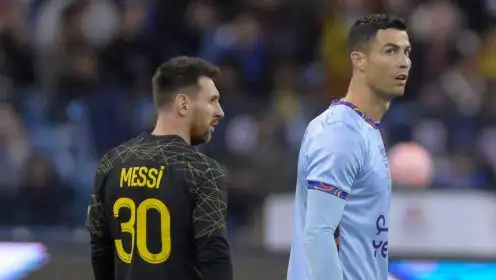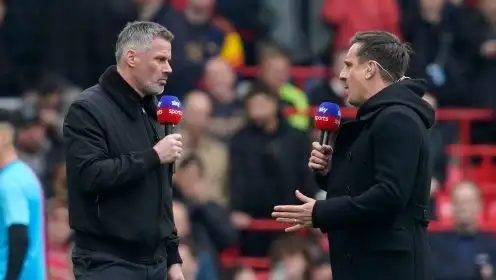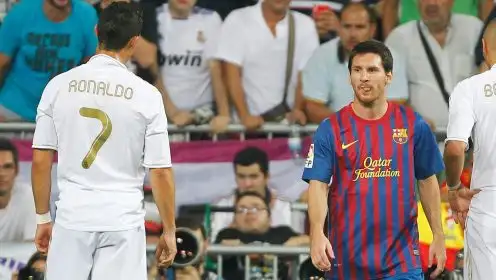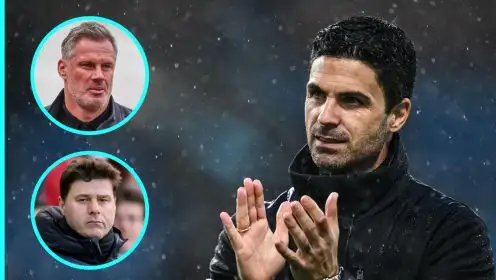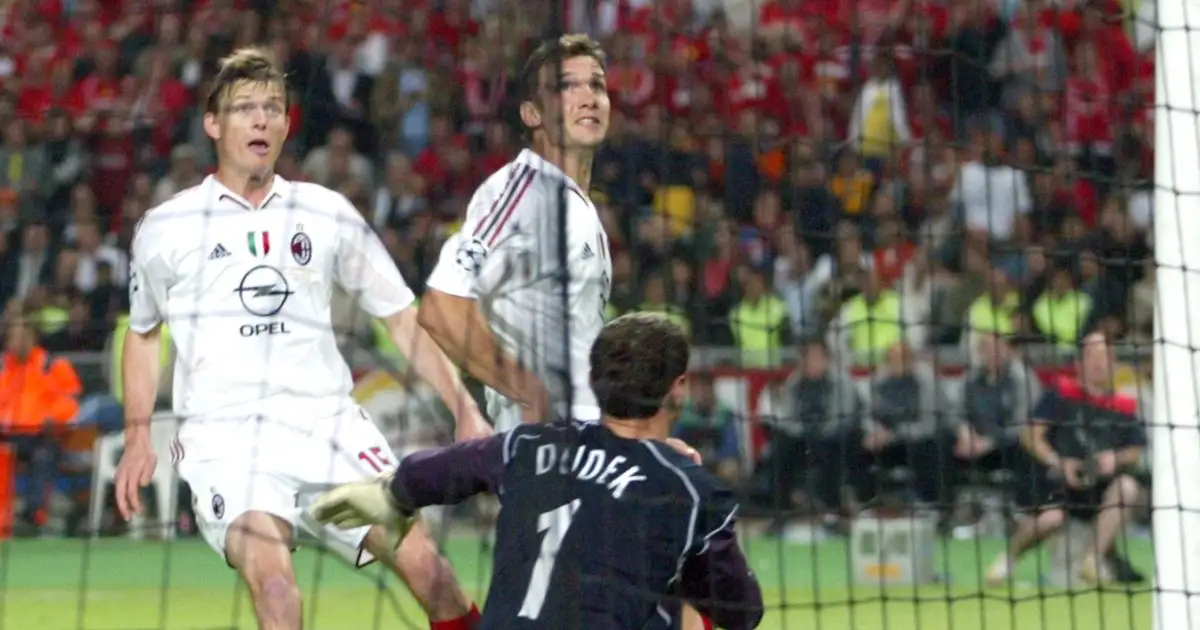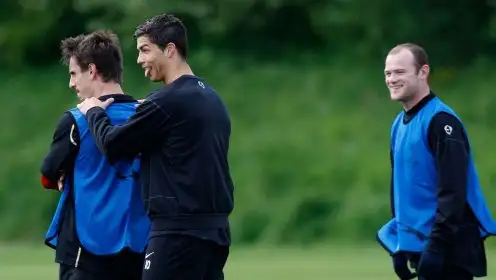Jamie Carragher exclusive on Cristiano Ronaldo: How Man Utd’s ‘big problem’ helped create their ‘best team’
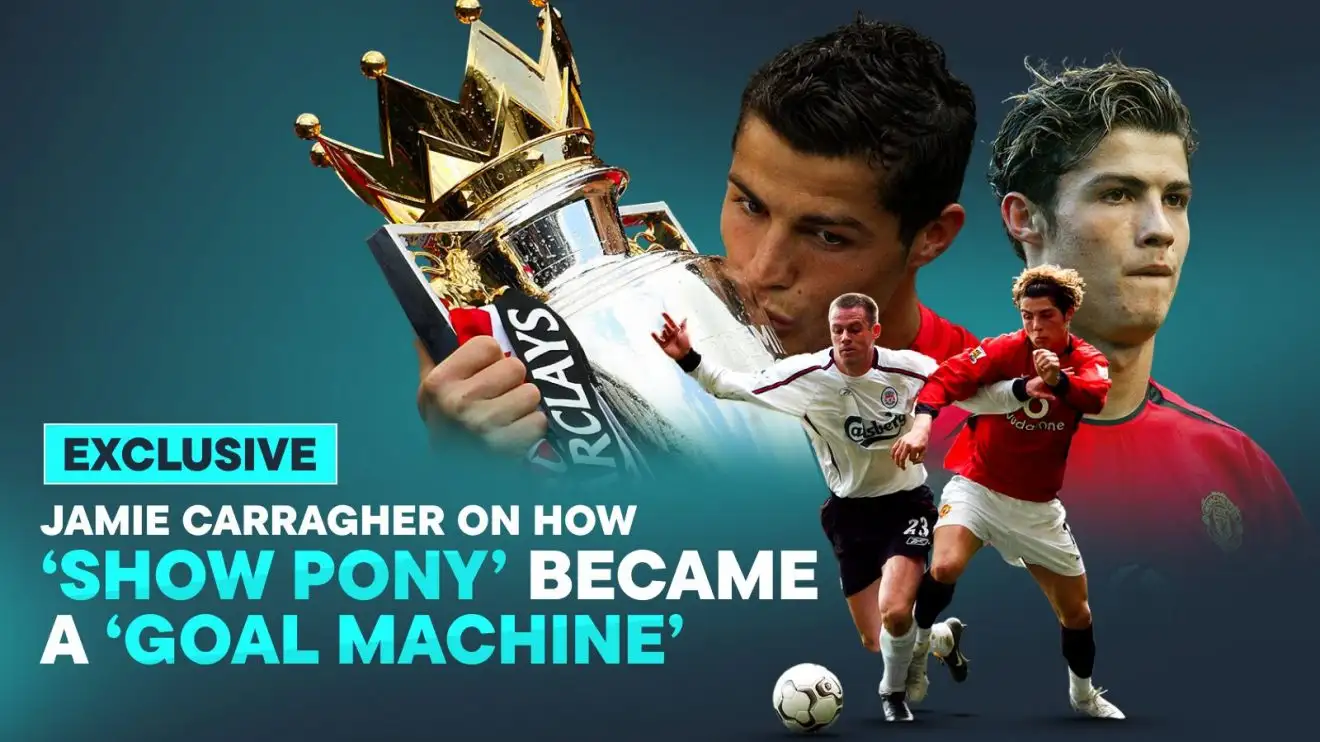
In the first instalment of an exclusive three-part series in which Jamie Carragher sits down with F365 to discuss the Messi-Ronaldo phenomenon, the Liverpool legend remembers what it was like to come up against a young, rising Portugal star.
Football folklore has it that Manchester United’s players, on a flight from Lisbon to Manchester after playing a friendly against Sporting CP in 2003, pleaded with Sir Alex Ferguson to buy the skinny, silver-booted winger who’d just spun John O’Shea so much the Irishman had to be unscrewed from the turf.
Shortly thereafter, Cristiano Ronaldo – alongside Brazilian midfielder Kleberson – was presented on the Old Trafford pitch. United spent £12.24 million to sign the 18-year-old and handed him the No.7 shirt recently vacated by David Beckham upon his switch to Real Madrid.
UNIQUE TO F365: Mediawatch | Mailbox | Winners & Losers | Bespoke PL tables
Although little was known about the Portuguese youngster who shared a name with a much more famous star of the game, expectations were high. But, according to former Liverpool defender Jamie Carragher, Ronaldo didn’t strike fear into Premier League defenders right away.
“Initially when he came over, he just kept doing step-overs with the ball,” Carragher says. “It was almost like he was a luxury player. He got a bit of criticism when he came to Man United that he was more about looking the part without there being any real substance about him.
“But because everyone used to have so much respect for Sir Alex Ferguson and the way he used to speak about his younger players – he was adamant Ronaldo was going to be a top player. So the fact Ferguson was his manager and kept banging that drum, it made everyone believe it; if Ferguson said it, it must be true.
“When he first came in there was a feeling that he was a bit of a show pony. That was the feeling in the league. But in the back of your head you’re thinking, ‘Is he going to be something special?’ Because he had quality but also who the manager was.”
Ronaldo didn’t score in his first six appearances against Liverpool and only registered one assist in that time. Carragher feels the Reds, especially after Rafa Benitez’s appointment in 2004, were a tough stylistic match-up for the young winger.
“Ronaldo became a great player at United,” he says. “In his last two years he was the main man. But when he initially came in, United had so many great players that he wasn’t going to be one you built a team talk around. He never really gave us too many problems.
“We were a tough opponent for him because – and I always thought Atletico Madrid were at tough opponent for him when I watched him at Real Madrid for the same reason – we weren’t that adventurous if we were playing a top team. I always felt Ronaldo needed space. If you denied him space, he was a lot easier to nullify. If your full-back didn’t venture too far forward and leave space for him to counter-attack into, he found it a lot more difficult. And with the manager that we had, if we played United we probably wouldn’t take them on punch for punch. We’d try to win a different way, maybe get a clean sheet and nick it 1-0.”
There was a clear turning point in Ronaldo’s development. Around 2006, he went from “show pony” to free-scoring stallion. There had been signs of progress up to that point and a steady increase in his output, first breaking into double figures for goals with 12 in 2005/06.
But there was a shift in Ronaldo over that summer, one that saw him return from World Cup duty with Portugal to score 23 goals and earn the PFA Players’ Player of the Year award. He followed that with a staggering 42 goals in a 2007/08 campaign that saw him lead United to a Premier League and Champions League double and add a first Ballon d’Or to another Player of the Year gong.
“There was a mentality shift,” Carragher says. “Rather than looking good, he wanted the numbers to prove it.
“It always fascinates me with Ronaldo – I would describe him as one of the greatest goalscorers of all time, but normally when other players fall into that category they’re goalscorers their whole life, from the first time they kick a ball. Ronaldo wasn’t. He almost made himself a goalscorer. That’s down to his work ethic and his mental strength. That, for me, has always been his biggest quality. He started becoming a goal machine.”
MORE ON RONALDO FROM F365
👉 Lionel Messi v Cristiano Ronaldo: F365 puts the debate to bed with season-by-season comparison
👉 Gary Neville reveals how Cristiano Ronaldo transformed from frustrating idiot to all-time great
Ronaldo had become the super-charged super-scorer he’d remain for the rest of his career. And for a while during the 2006 World Cup, it looked as though that career would have to find a new home. For his role in remonstrating to the referee after Wayne Rooney had stamped on Ricardo Carvalho in the quarter-final between England and Portugal, and for the knowing wink he gave to the bench after his club teammate was rightly red-carded, many felt Ferguson would have to ship Ronaldo out of Old Trafford.
“It all happened so quickly,” remembers Carragher, a substitute who’d go on to miss a spot-kick in England’s shootout defeat to the Portuguese. “It was only when we got on the coach after the game that everybody realised fully what had gone on.
📣 TO THE COMMENTS! Was the 2008 side – feat. Ronaldo, Rooney, Tevez – Fergie’s best ever at United? Join the debate
“It became more of a Manchester United thing than an England-Portugal thing. I wasn’t that bothered. I wasn’t sitting there really angry with Ronaldo. I just thought, ‘This is a big problem for Man United.’ That was Alex Ferguson’s man-management, sorting that situation out, because there’s no doubt Wayne was not a happy boy on the coach after the game.”
Not only did Ronaldo and Rooney continue to coexist at United; along with summer signing Carlos Tevez, they quickly went on to form one of the most frightening front threes in Premier League history.
“It was really difficult because there was so much movement between the three of them,” Carragher says. “That was probably the best team Man United have ever had. In that era they won the Champions League, got to three Champions League finals and won three leagues in a row.
“It was very difficult to pick one person out. There was that much movement. It reminded me of Arsenal when they had Thierry Henry, Robert Pires, Ashley Cole and Dennis Bergkamp. It was difficult to stop. I wasn’t fixated on Ronaldo, but there was so much movement and you were never sure where they were going to pop up at different times. It was more about the structure and the set-up than any individual.”
And Liverpool felt the full force of United’s fearsome forward line when they visited Old Trafford in March 2008. Ferguson’s men, charging towards the title, dispatched their rivals with relative ease. And Ronaldo, with a 79th-minute header, got his first goal against Carragher and co.
“As a defender, when there’s that much movement, you should just stand still,” Carragher says. “It sounds basic, but the whole reason for their movement is they’re trying to drag people into places they don’t want to go. We were a pretty organised and structured team. I used think, ‘Just stay in position. Don’t move.’
“But it obviously didn’t work that day because we got beat 3-0.
“If we played someone who was really good in the air, we’d do zonal making but one player would mark them and try to put them off. We used to do that with John Terry. The longer it went with Ronaldo, the stronger he got in the air, so that would be something we’d try to do. I remember that header. It was at the Stretford End. We were down to 10 men, so you’re always going to be short at a set piece.”
At the end of the 2007/08 season, Real Madrid made their move for Ronaldo. Ferguson was able to rebuff Los Blancos initially, but that was only to delay what had come to feel inevitable. A year later, after another title, another Champions League final appearance and another 26 goals, Ronaldo became the world’s most expensive player when he moved to the Bernabeu for £80million.
“It wasn’t just his strength; it was his power of running,” Carragher concludes of Ronaldo’s evolution from the skinny teenager with the boyband haircut who arrived in England in 2003 to the chiselled super-athlete with an insatiable appetite for goals. “He was making runs and he could go longer and quicker.
“The big difference in his game was that he went from a boy to a man.”
Next week, the Liverpool icon remembers what it was like to play against a young Lionel Messi on the cusp of a breakout Clasico performance
READ NEXT: Why ‘world-record’ holder Cristiano Ronaldo has actually scored zero proper goals for Portugal
More: Cristiano Ronaldo | Jamie Carragher
